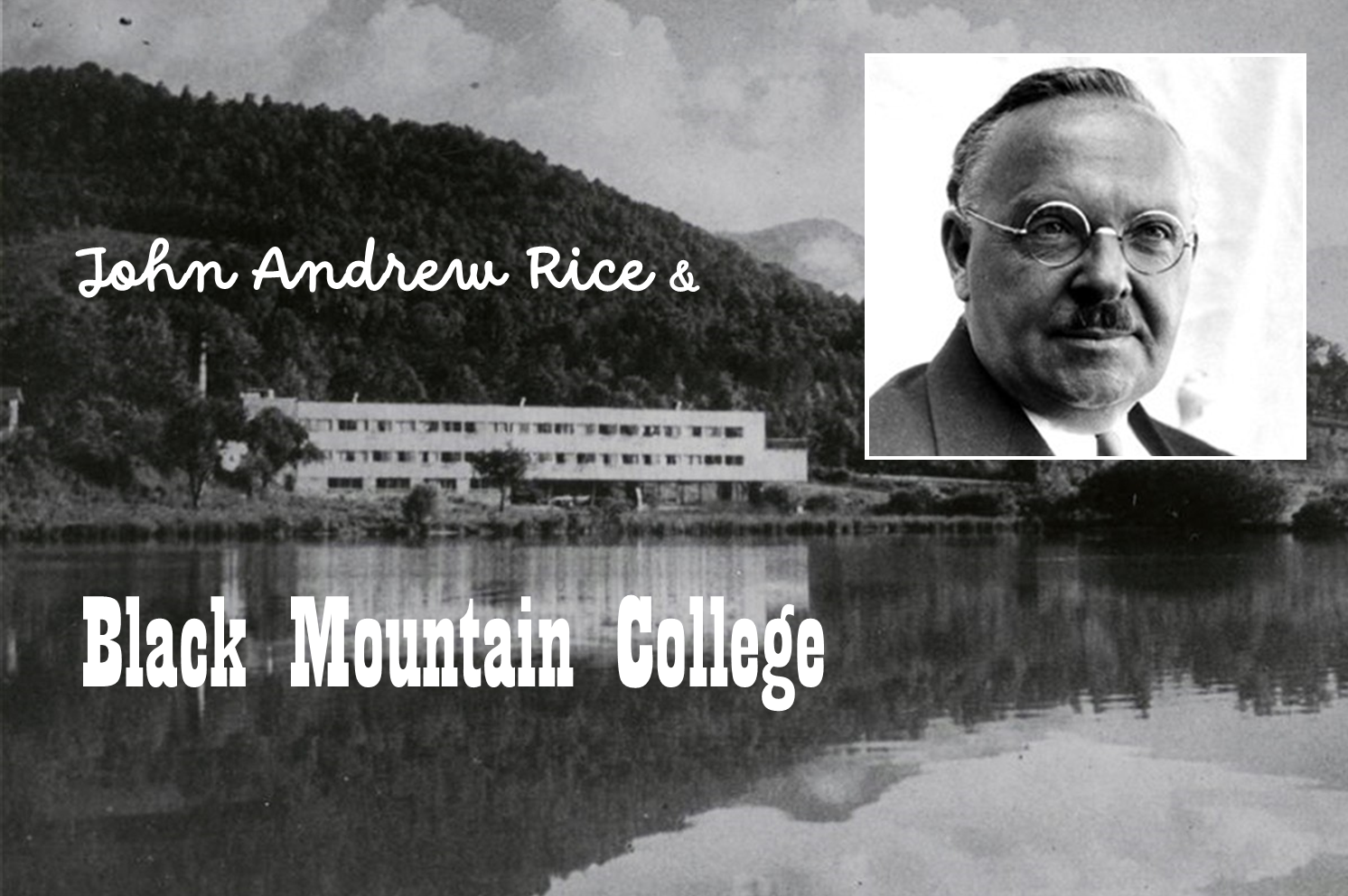Monocacy Cemetery has several well-known residents, but John Andrew Rice was someone who had an incalculable influence on twentieth century culture. He and his second wife Dikka are both buried at Monocacy Cemetery, having retired to the area to be near his son Peter’s family in Germantown and daughter Mary’s family in Arlington.
John Andrew Rice grew up in a family of South Carolina individualists and became one himself, a rebel among rebels. He was a star pupil at Tennessee’s famed Webb School, finished Tulane University in three years, and went to Oxford as a Rhodes Scholar. He turned itinerant teacher moving his first wife Nell, and children Frank and Mary from the Webb School (CA), to the University of Chicago (IL), to the University of Nebraska (NE), to New Jersey College for Women (NJ), and Rollins College (FL).
In 1933, Rice was dismissed from Rollins for his unorthodox, progressive ideas about education based on the “learning by doing” educational philosophy of John Dewey, and Walter Gropius’ Bauhaus’ blending of art and technology. The last straw for the College was Rice’s movement to ban sororities and fraternities. Other likeminded faculty and students followed him in solidarity and encouraged Rice to open his own liberal arts college.
Three months later, John Andrew Rice started Black Mountain College (BMC) near Ashville, NC, with Theodore Dreier, Ralph Reed Lounsbury, and Frederick Raymond Georgia, along with 22 students and 12 teachers. Joseph and Anni Albers left the Bauhaus School, fled Nazi Germany and landed at Black Mountain. Rice was the ‘Rector’ (president) from 1934 to 1938, following in his father’s footsteps. Dr. John Andrew Rice Sr. was an itinerant Methodist preacher who was president of Columbia College (SC) from 1894 – 1900.
Black Mountain was an experimental, liberal arts school that became a crucible for mid-20th century avant-garde art, music, and poetry. Founded on the principles of balancing the humanities, arts, and manual labor within a democratic, communal structure. The school’s mission was to create “complete” people.
The astonishing number of major avant-garde artists who passed through the BMC campus is the reason for the school’s fabled hold on the cultural imagination. Black Mountain was an epoch-making influence at a critical moment in American history, particularly after the war, when the country emerged from overseas conflict to enter an unprecedented economic boom and era of artistic growth.
Many of the college’s faculty and students were or would go on to become highly influential in the arts, including Josef Albers, Anni Albers, Leo Amino, Hazel Larsen Archer, Ruth Asawa, Eric Bentley, Ilya Bolotowsky, John Cage, Harry Callahan, John Chamberlain, Robert Creeley, Merce Cunningham, Max Dehn, Robert De Niro Sr,.Ed Dorn, Fielding Dawson, James Leo Herlihy,
Elaine de Kooning, Willem de Kooning, Agnes de Mille, Robert Duncan, Francine du Plessix Gray, Lyonel Feininger, Morton Feldman, Helen Frankenthaler, Buckminster Fuller, Suzi Gablik, Clement Greenberg, Walter Gropius, Shoji Hamada, Lou Harrison, Ray Johnson, Karen Karnes, Alfred Kazin, Franz Kline, Jacob Lawrence, Bernard Leach, Richard Lippold, Barbara Morgan, Hilda Morley, Robert Motherwell, Beaumont Newhall, Nancy Newhall, Kenneth Noland, Charles Olson, Joel Oppenheimer, Arthur Penn, Robert Rauschenberg, Mary Caroline Richards, Dorothea Rockburne, Michael Rumaker, Roger Sessions, Ben Shahn, Aaron Siskind, Kenneth Snelson, Ted Stamos, Paul Taylor, David Tudor, Cy Twombly. Jack Tworkov, Peter Voulkos, Mary Parks Washington Susan Weil, John Wieners .
In 1948, faculty member Buckminster Fuller attempted to create his first geodesic dome out of aluminum venetian blind slats with the help of BMC students.
Formed in his own image, Rice succeeded in making Black Mountain College a reality despite economic challenges but was unable to rise to the occasion or conquer his own personal shortcomings. His eventual dismissal in 1940 from the college he pioneered was a tremendous failure. He and his wife divorced, though she stayed on, advancing from librarian to literature professor. Rice left, became a writer, and soon married his second wife, Dikka, twenty years his junior. They had two children, Peter and Elizabeth.
In 1941, when the college expanded and relocated across the scenic valley to nearby Lake Eden, students were required to participate in the construction of their own campus as part of their education, a practice which continued until its eventual closing in 1956. Black Mountain College was a liberal arts laboratory.
Rice went on to write short stories through the 40’s for The New Yorker, and for Collier’s in the 50’s. His 1941 brooding autobiography, I Came Out of the Eighteenth Century, reveals Rice as a brilliant critic of teaching and an acid critic of teachers. It won the 125th Anniversary Harper Book Prize. Rice’s 1955 book of collected short stories Local Colors was a critical success. His legacy is that of a great instigator and his experiment has had an influence much longer than BNC’s 25-year existence.
The Black Mountain College Museum and Arts Center, dedicated to the institution’s history, is alive and functioning in downtown Asheville, North Carolina. Visit if you are in the area.

